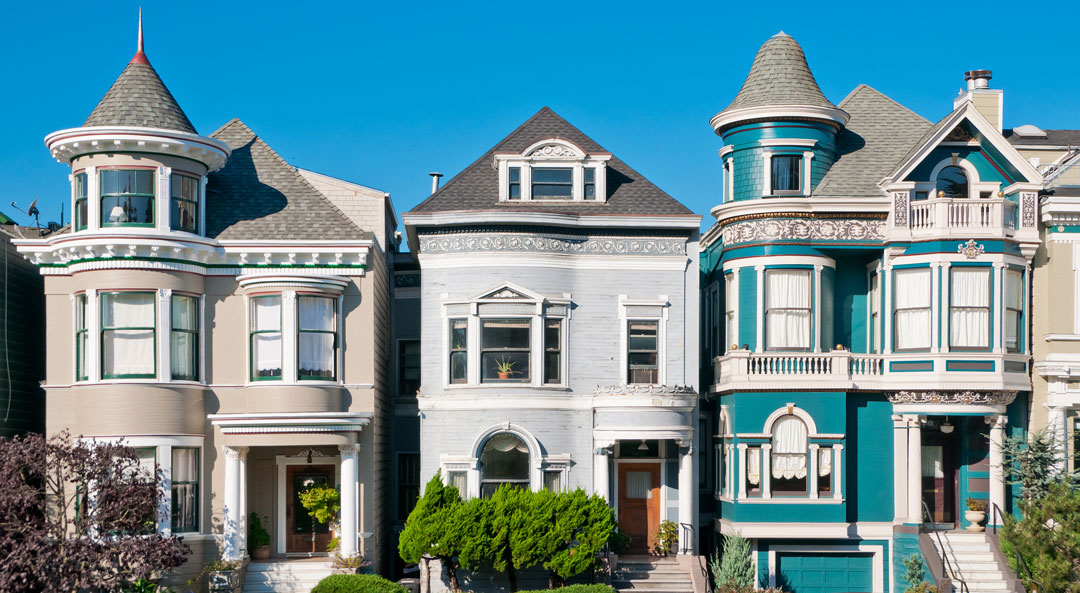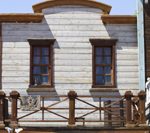 WOOD AND CALICO
WOOD AND CALICO
The earliest buildings in San Francisco and in hastily-constructed mining camps like Virginia City were built of materials that were cheap, easy to put up, and did little more than keep the rain off (if that). This usually meant wood, sometimes tilted up against caves or dugouts in hillsides, with fabric stretched over it.
Ships’ sails were an early source of fabric near the sea coast; further inland wagon covers served the same purpose. As buildings became more formally constructed the use of fabric still continued for interior partitions. Calico was a favorite for this purpose, as it was relatively lightweight and served a decorative purpose as well.
In short order, demand for more permanent and refined dwellings led to importation of pre-fabricated wooden houses from the east coast. These buildings were known as ‘portables’ or ‘Boston houses’.
Needless to say, the buildings constructed using any of these methods were highly fire-prone. See History of San Francisco Fires
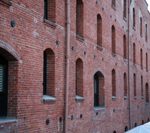 MASONRY
MASONRY
In the early 1850s, prompted by the repeated fires in the city, San Francisco enacted building codes that required the use of stone and masonry construction in the downtown area. This greatly reduced the fire hazard, but was more vulnerable to earthquakes. Wooden buildings are flexible; they sway and recover from earth movement, while unreinforced brick buildings can literally be shaken apart.
Fort Point, the Civil-War era fort tucked under the southern approach to the Golden Gate Bridge, is an example of masonry construction. Built over a period of eight years from 1853 to 1861, it owes much of its durability and longevity to its seven foot thick walls.
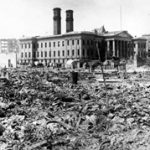 STONE BUILDINGS
STONE BUILDINGS
Stone buildings fared somewhat better in quakes. A notable example is the Old United States Mint building, constructed in 1874. Known as the Granite Lady, it was one of the few buildings that survived the 1906 earthquake and still stands today.
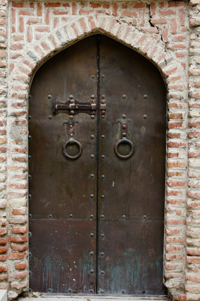 IRON “FIREPROOF” BUILDINGS
IRON “FIREPROOF” BUILDINGS
Pre-fabricated corregated iron buildings were imported from England and Belgium in the early days of San Francisco. Seemingly an ideal solution to the fire issues raised by wood buildings, they proved even more hazardous than their flammable counterparts. The iron doors stuck together when heated by fire, and the buildings themselves melted in the heat of the flames.
Iron shutters and iron decoration of various types proved more utilitarian and attractive. The shutters could be closed and doused with water during fires; although the shutters themselves might weld shut they kept embers from entering a building and helped prevent the interior from burning.
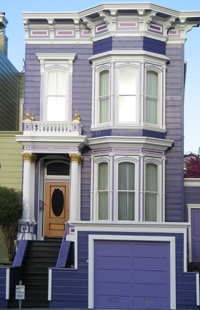 SAN FRANCISCO VICTORIAN HOUSES
SAN FRANCISCO VICTORIAN HOUSES
The term ‘San Francisco Victorian’ conjures up images of the famous ‘Painted Ladies’ of the city. In reality, Victorian architecture in the New World was a mix of styles including:
Italianate – 1840-1885 -Featured a cornice with brackets, tall narrow windows, a low pitched roof, and often had a cupola on the roof
High Victorian Gothic – 1860+ – Featured masonry construction and pointed windows, often used for churches and government buildings as well as homes
Gothic and Italianate styles were made popular by the published pattern books of architect Andrew Jackson Downing in the 1840s and 1850s.
Second Empire – introduced at the Paris Exhibitions of 1855 and 1867; this style was characterized by a mansard roof and became popular in the U.S. after the Civil War
Stick and Eastlake – 1860-1890 – Featured a steep gabled roof and towers
Queen Anne – 1880-1910 – This style was asymmetrical, with a round tower at the corner and patterned shingles
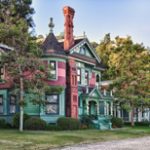 OTHER CALIFORNIA VICTORIANS
OTHER CALIFORNIA VICTORIANS
Beautiful examples of the architectural styles most closely associated with San Francisco still exist in other parts of the state, notably:
Heritage Square Museum, Los Angeles, CA
Sacramento Downtown and Midtown Districts
San Diego Victorian Homes
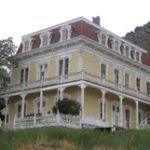 VIRGINIA CITY VICTORIANS
VIRGINIA CITY VICTORIANS
Much of Virginia City burned to the ground in 1875, but it was rapidly rebuilt and many of those buildings still stand today. A few of the gracious old Victorians have been converted to private homes or hotels; others have become historic centers and are open to the public.
FURTHER READING AND OTHER REFERENCES
History of the Old United States Mint
Fort Point National Historic Site
Alexander, James Beach & Heig, James Lee. San Francisco: Building the Dream City. Scottwall Associates; First Edition edition (2002)
Pomada, Elizabeth; Larsen, Michael and Baer, Morley. Painted Ladies: San Francisco’s Resplendent Victorians. E.P. Dutton; 1st edition (October 27, 1978)
(Posted August 2014)
